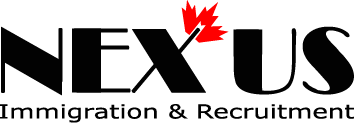
Quick overview of Commercial License in Alberta – Class 1
Want to get a Class 1 driver’s license in Alberta? This license, combined with the Air Brake Operating Permit (Endorsement Q), enables you to operate most vehicles on the road. If you add the School Bus Driving Permit (Endorsement S), you can drive all types of vehicles. This is ideal for those considering a career in transportation. The process is designed to ensure safety and prepare you for the challenges of driving large vehicles. It includes training, exams, and a medical examination, ensuring you are equipped to drive responsibly and professionally, significantly contributing to the transportation industry.
Here’s how you can get started:
- Funding for Training: Don’t worry about costs! Numerous funding options are available, including government grants and privately funded programs to support prospective drivers. If you are currently ineligible for public or private funding, the Ministry of Transportation of the Alberta Government has established a rigorous curriculum with a reasonable fee cap.
- MELT (Mandatory Entry-Level Training): This training is required and includes both classroom learning and hands-on driving experience. It’s designed to give you a solid foundation in driving large vehicles safely.
- Knowledge Test: After your training, you’ll take a test on what you’ve learned, including road signs, traffic laws, and safe driving practices for big trucks.
- Road Test: Next up is showing off your driving skills in a practical test. You’ll need to prove you can handle a big rig in various driving conditions.
- Medical Exam: A medical exam ensures you are fit to drive, covering vision, hearing, and overall health. It also confirms your compliance with the physical health requirements of NAFTA member countries..
Follow these steps, and you’ll be on your way to a rewarding career in trucking!
Funding:
In Alberta, the provincial government has set a cap of CAD 10,000 for the full version of the MELT course. If you are taking a MELT course in other provinces or have had your driver’s license for less than two years, you may receive a prorated reduction based on the credits of the courses completed, with a training cost cap of CAD 5,000. The main categories of funding sources for this training are:
- DBTW Vocational Training Project: Originating from federal employment insurance funds (i.e., unemployment benefits), this funding in Alberta is repackaged as the “Drive Back To Work” initiative. The amount of subsidy varies depending on the trainee’s EI seniority and insured amount. Additionally, this vocational training usually starts every 2 to 3 months and has a limited number of spots available, so timely application is crucial.
- Private Subsidy Program: Typically comes from subsidies provided by companies for existing employees who are internally transferring or being promoted. It also applies to new hires willing to sign long-term contracts of 1 to 4 years. These subsidies generally require the beneficiary employees to sign a contract and guarantee a certain number of years of service or a salary slightly lower than the company’s standard rate for 1 to 2 years. After a certain period of service, the normal salary will be restored.
- Fully Self-Funded: For new immigrants or others who want to obtain the AB Class 1 but are unable to secure other financial subsidies. The most common reason is the quick exhaustion of DBTW quotas, making registration impossible, yet they are determined to obtain the AB Class 1 driver’s license.
Please note, the above training costs are limited to MELT courses. Costs for re-examination and additional training due to failing the road test are not included in these limits.
MELT (Mandatory Entry-Level Training):
This training is mandatory and includes academic knowledge in the classroom and practical driving experience on the road. It is designed to provide you with a solid foundation for safely operating a professional coupling vehicle. The course structure is as follows:
- Classroom (Lecture): (Total 47 hours)
- 40.5 hours of general education
- 6.5 hours of air brake training
- Textbook:
- Approximately 630-640 pages of presentation notes (based on the standard textbook released in September 2022)
- Practical (in-parkade): (Total 17.50 hours)
- 15.5 hours: Mainly pre-trip inspections (may include disconnecting and connecting the vehicle’s front end to the trailer)
- 2 hours: Inspection and operation of air brakes
- On-The-Road (OTR): (Total 57 hours)
- 39 hours: Mainly road driving, with training focusing on right turns, downshifting on declines, upshifting on inclines, and entering and exiting highways or expressways
- 18 hours: Mainly pre-trip inspections, disconnecting/connecting the front end of the vehicle to the trailer, and reversing into storage
The total duration of the course is 121 hours. Driving schools can directly use the standard textbook handouts provided by the provincial government or compile their own textbooks, but they must fully include all topics and depth of knowledge covered in the provincial government’s standard textbook.
Knowledge Test:
The content for the written test can be derived from the provincial government’s issued Commercial Driver’s Guide – Open Government Program. Typically, reading this manual is sufficient to prepare, but it is still recommended to refer to the academic lecture documents issued by the provincial government (yes, that 630+ page PowerPoint presentation: Commercial truck driver training course: Class 1 presentation)

The examination locations are at various Registry Agencies. For more details, you can search on the following website: https://www.alberta.ca/lookup/find-a-registry-agent.aspx
Road Test:
Exam Duration: 2 hours and 15 minutes (please ensure you arrive at least 30 minutes before the exam time for registration and verification of documents).
Exam Subjects:
- Pre-trip Inspection: Includes disconnecting and connecting the front cabin and trailer, as well as the Endo Q: air brake technical test.
- Road Driving: Includes reversing, or may be combined with the pre-trip inspection.
Vehicle Specification Restrictions:
- Transmision Type:
- Manual transmission: 13-speed (or higher-speed for highway versions)
- Automatic transmission: Effective from February 1, 2023, you may use semi-automatic, manually shifted automatic, or fully automatic transmissions. Please note that some older automatic transmission models still require clutch engagement when starting the vehicle or moving from a standstill.
Cost: CAD 217
How to Apply: In-person at a provincial Registry Agency with your MELT completion certificate and written exam pass certificate, or make an appointment online: https://scheduler.itialb4dmv.com/schAlberta
Medical Exam:
You will undergo a medical examination to ensure you are fit to drive, covering your vision, hearing, and overall health. Additionally, it will clearly determine whether you meet the physical health requirements of NAFTA (North American Free Trade Agreement) member countries.
The main examination items are as follows:
- Vision: Whether you have color blindness or if it is mandatory to wear glasses while driving
- Hearing Test
- Cardiovascular and Cerebrovascular Systems
- Nervous System: For example, whether you have epilepsy, neurological reactions, or other diseases that require long-term medication
- Respiratory System: For example, whether you have asthma or other diseases that require long-term medication
- Metabolic System: For example, whether you have diabetes or other diseases that require long-term medication
- Mental Illness: For example, whether you have multiple personalities, depression, bipolar disorder, or other diseases that require long-term medication
- Other Diseases: For example, whether you have a drug addiction or may be required to undergo a urine test
Those who pass the road test must complete and pass the health examination at a designated medical institution within Alberta within a specified period. Since Class 1 driver’s licenses are sent to relevant border control units for filtering and filing, having specific physical or mental illnesses may restrict cross-border practices, thus affecting your employment options, especially when one seeks cross-border transpiration. Due to the protection of personal medical record privacy, applicants or current employees cannot be compelled to disclose all private medical records. Some trucking companies conduct preliminary screening by requiring employees to obtain a FAST (North) card.







